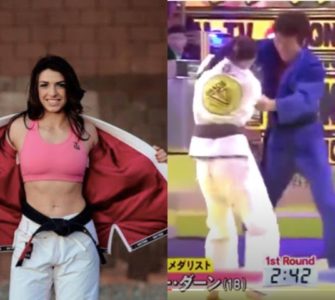As Cesar A. Cruz said, “Art is to comfort the disturbed, and disturb the comfortable”. This statement holds dear by many artists, no matter the form of art they love to create. And for those who appreciate all of the modern and ancient forms of art, they realize the beauty that comes from making a masterpiece cup of coffee.
Just woke up and getting ready to take on the day? Coffee. In the middle of work and need to unlock your mind for new ideas? Coffee. Out on a date? Coffee. Just need something delicious to drink? COFFEE.
If you’re one of those mindful individuals who appreciate coffee for the art it is, you might have found yourself thinking about learning more about all of the artwork you could produce with it. You might have been considering taking it more seriously as a job. So what are all of the hidden treasures you can learn about making the most savourable cup of coffee out there?
Espresso Training Basics
Your training as a barista starts with getting familiar with the different ways you can extract the espresso, and then the work with the milk afterwards. The secret is knowing the exact ratios and the recipes techniques, so you’ll be able to maintain the same kind of consistency in each cup you create.
Espresso Extraction & The Recipe Variables
Making espresso might look like an easy task. After all, it’s only hot water added to finely ground coffee. If that’s what you’re thinking, think again. In order to make the same cup of espresso for every different kind of espresso beverage every time, you need to add the exact amount of ingredients in the same way every time.
The variables you’ll need to measure and be precise about are:
1- Grinding The Coffee Beans
Choosing the best espresso machine to grind your coffee beans is crucial. Grinding the coffee beans is the first step in extracting the flavor from them, and you need your grind to be of consistent size. Based on the shots you want to make, you’ll then adjust the size of the particles your grinder produces, choosing the level of fineness or coarseness you desire.
2- The Coffee Dose
Whether you’re using measuring using baskets or your trained naked eye, each shot and every beverage need their respective dose of coffee. If you add inconsistent doses every time, you’ll create different kinds of coffee in each cup.
3- Distribution
Distributing the ground coffee in the filter basket is important to create an even bed. It can be done using your fingers or by shaking around the basket, all in order to prepare it for tamping.
4- Tamping The Ground
This is to compact the ground to further ensure it’s evenly distributed. Why is this crucial? Because the grinders usually always produce the grounds in the shape of the dunes. If you move onto extraction right away without making it even, laws of physics say that the water will move to the area of least resistance, or the edges in this case. This will result in under-extracted center and over-extracted edges, tampering will ensure the consistent taste you want to produce.
5- Extraction
Extraction is all of the flavors, compounds & aroma the water is taken from the ground. Knowing the perfect combination of variables to produce just the right extract, protects your shot from being under-extracted (which tastes like sour, lacking sweet, or salty) or over-extracted (tasting bitter, hollow, dry or astringent).
Adding Milk To the Artwork
Now on to where the real artwork takes place. Whether you’re about to make a Macchiato, a Cappuccino, a cup of good old Latte, or any other espresso-based milk beverage, the secret is in preparing your milk right.
Stretching & Steaming the Milk
Milk preparation starts with what’s known as “stretching”, otherwise it’s introducing air to texture the milk. Afterwards, the milk is steamed. Stretching and steaming the milk is essential to produce the perfect blend between the milk and the espresso. That’s because properly stretched, then steamed milk has altered chemical properties that brings out that perfect sweet flavor, and blends just perfectly with the espresso.
Rolling Milk: Will It Really Help With Your Training?
You’ve followed every step of the way, training your eyes and hands on producing the precise, consistent cup you want to create. But there’s still something wrong with the blend, it just doesn’t seem to be right.. So what are you missing?
If that’s the case, you’re probably missing the right technique to prepare your milk. It’s not enough to just stretch and steam your milk, “rolling” the milk while steaming makes all the difference in the cup.
This is how to create the perfect latte art:
- Start by introducing air into the milk. This is done by holding the steam right under the surface of the milk at 100 degrees. Watch as the milk starts to “stretch” and expand.
- Next is steaming the milk, while “rolling” it with the steam wand. Keep rolling the milk to create a rapid swirling motion, while bringing the temperature up to 140 degrees.
- Get rid of any air bubbles, continuing to roll the milk to prevent separation.
There you go. Your masterpiece is ready to be duplicated as many times as need be.
Barista Training In a Nutshell: It’s All About Consistency
Starting out as thinking that making a good cup of espresso is a piece of cake, you might feel like it’s a whole big deal now. After all, how many times have you created an extremely tasty cup of coffee, only for it to not taste very good the next time you try to? The secret is in consistency, in every step of the way. And that’s what your training as a Barista is all about, to give you the skills you need to create your masterpieces.


















